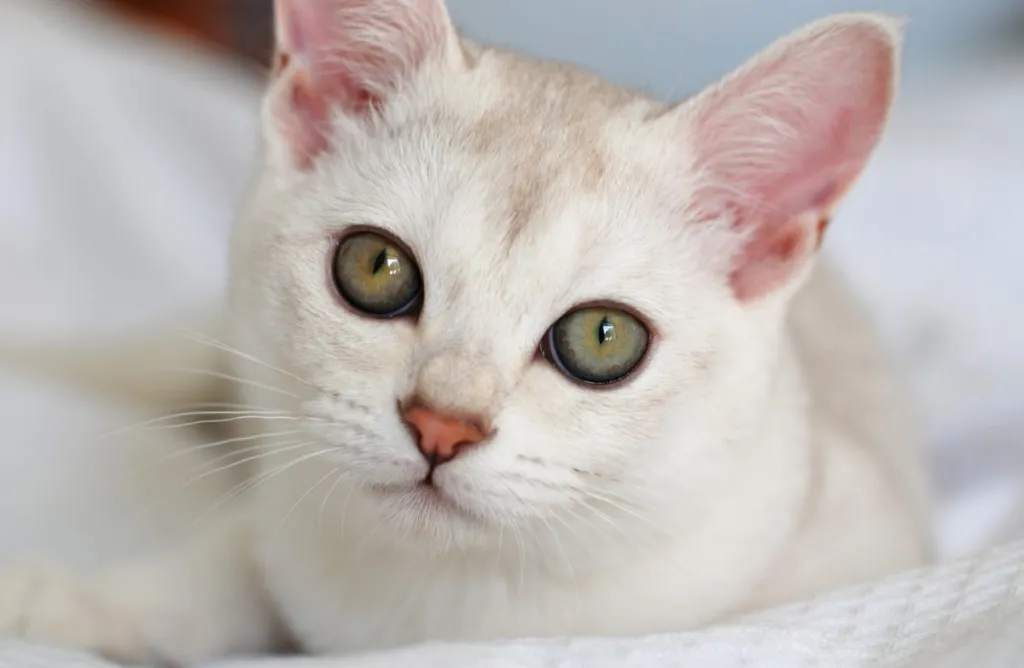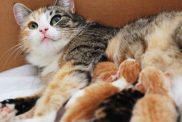With a Cheshire cat smile and stunningly good-looks, the Burmilla, a hybrid of the Burmese and Chinchilla Persian cats, is a magical, medium-sized cat with a shimmering silver coat. While not actually magical, this crossbreed exudes an otherworldly and elegant beauty thanks to their large, lined green or gold eyes and tipped fur. Their coats can be short to medium in length, and are usually plush, dense, and luxurious. Females are typically smaller and daintier in size and demeanor, while males tend to be larger and robust, with a stockiness inherited from their Burmese lineage. Burmilla cats can sometimes be referred to as Asian Shaded, referencing their Asian cat breed parentage.
Are Burmilla cats rare?
You’re not likely to encounter a Burmilla cat unless you’re seeking one. This breed was an accidental creation by two cats waiting to breed with other cats, and still remains bred by only a few catteries. As a result, buying a Burmilla cat tends to be an expensive endeavor, costing up to $2,000. Additionally, due to the potential of polycystic kidney disease inherited from the Persian side, it’s critical to choose a respected and vetted breeder. It’s important to consider health over looks with this intelligent and gentle breed, though that shouldn’t be an issue considering they are objectively gorgeous cats.
When considering a Burmilla cat, it’s advisable to prioritize adopting from rescue organizations or shelters to provide a loving home to a cat in need. However, if you decide to purchase a Burmilla kitten, it’s crucial to choose a reputable breeder. Conduct thorough research to ensure that the breeder follows ethical practices and prioritizes the well-being of their cats. Reputable Burmilla cat breeders prioritize the health and temperament of their cats, conduct necessary health screenings, and provide a nurturing environment for the kitties. This active approach ensures that you bring home a healthy and happy kitty while discouraging unethical breeding practices.
Quick Facts
- Origin: United Kingdom
- Size: Medium (7-12 pounds)
- Breed Group: Asian
- Lifespan: 7-12 years
- Coat: Short, dense, and luxurious, with a unique “ticked” pattern where each hair has multiple bands of color. Comes in a variety of shades like silver, chocolate, and golden champagne.
- Temperament: Friendly, playful, affectionate, intelligent, curious, enjoys human interaction and playtime.
- Exercise Needs: Moderate – thrives on daily playtime and mental stimulation.
- Training: Easy to train due to their intelligence and desire to please.
- Grooming: Weekly brushing to prevent matting and maintain their sleek coat.
- Health: Generally healthy, but some potential for genetic health conditions
- It can take up to five generations of breeding before the cats are up to Burmilla standard.
- The eye color of a Burmilla takes up to two years to develop fully.
Burmilla Pictures
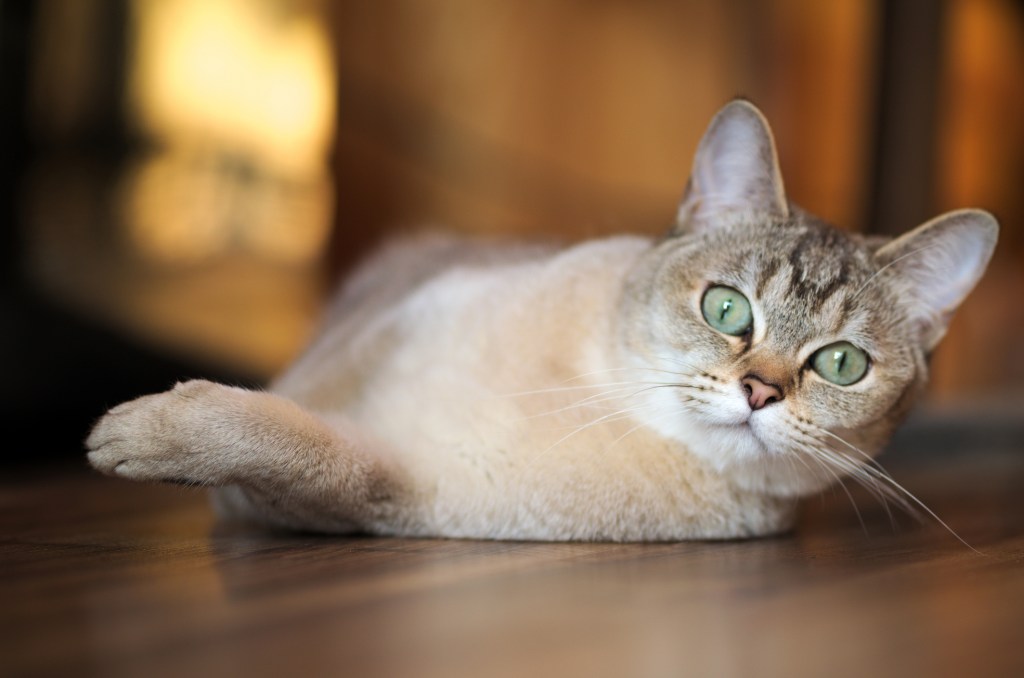
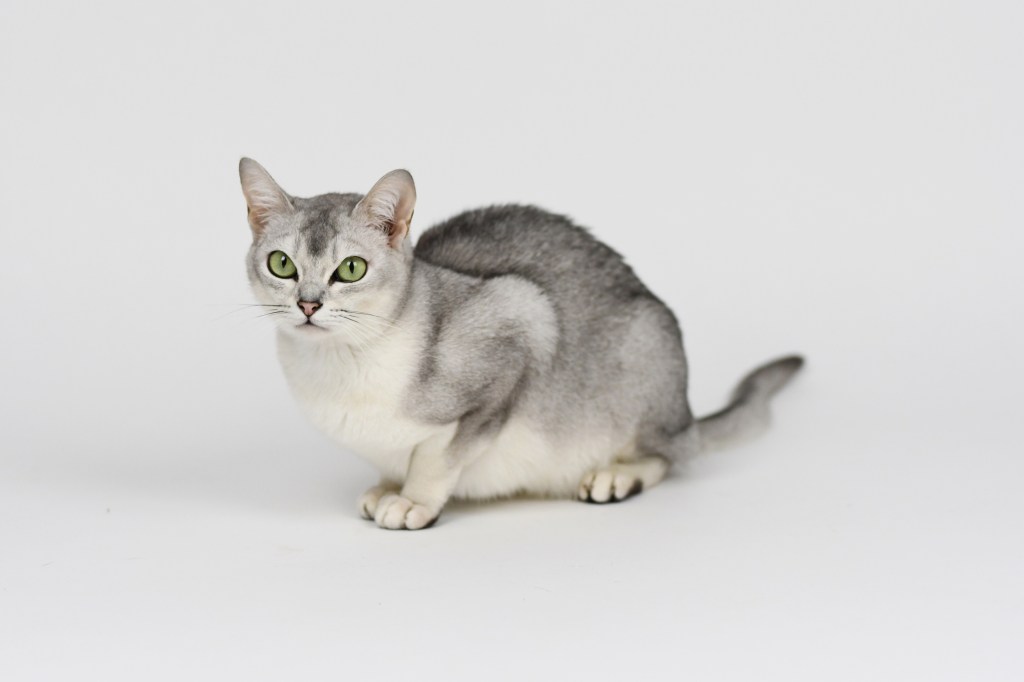
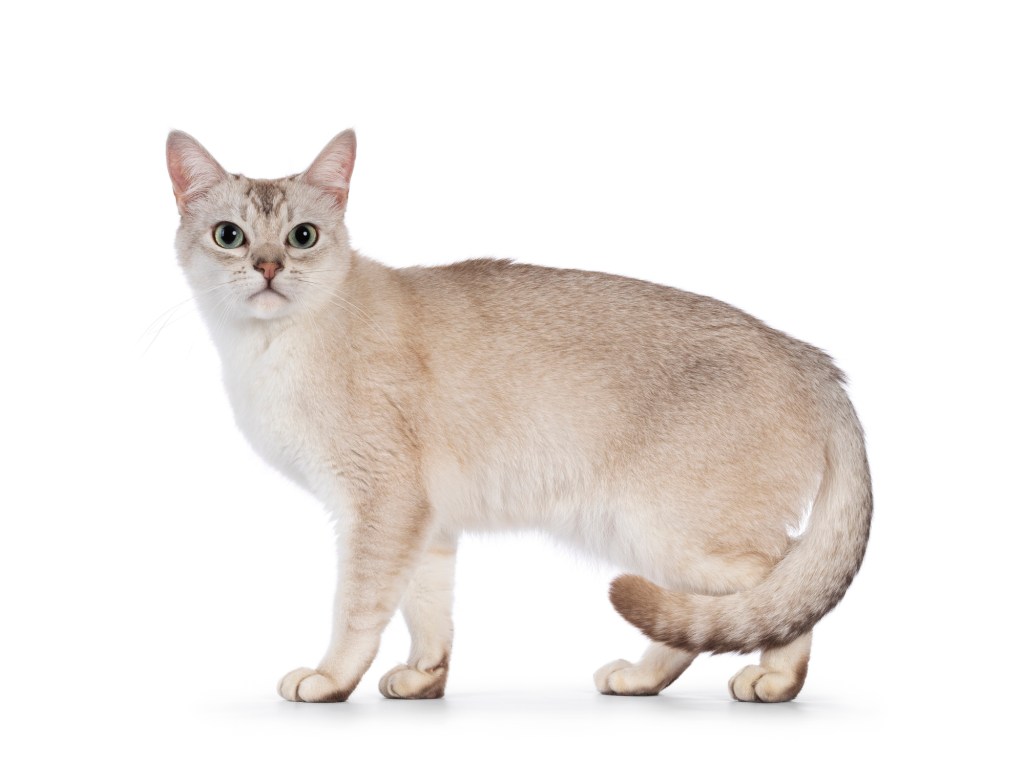
-
Affectionate with Family
Some cat breeds are typically independent and aloof, even if they’ve been raised by the same person since kittenhood; others bond closely to one person and are indifferent to everyone else; and some shower the whole family with affection. Breed isn’t the only factor that goes into affection levels; cats who were raised inside a home with people around feel more comfortable with humans and bond more easily.

See Cats Less Affectionate with Family -
Amount of Shedding
If you’re going to share your home with a cat, you’ll need to deal with some level of cat hair on your clothes and in your house. However, shedding does vary among the breeds. If you’re a neatnik, you’ll need to either pick a low-shedding breed or relax your standards. This furniture cover can make it easier to clean up cat hair and keep it off your sofa!
-
General Health
Due to poor breeding practices, some breeds are prone to certain genetic health problems. This doesn’t mean that every cat of that breed will develop those diseases; it just means that they’re at an increased risk. If you’re looking only for purebred cats or kittens, it’s a good idea to find out which genetic illnesses are common to the breed you’re interested in.
-
Potential for Playfulness
Some cats are perpetual kittens—full of energy and mischief—while others are more serious and sedate. Although a playful kitten sounds endearing, consider how many games of chase the mouse-toy you want to play each day, and whether you have kids or other animals who can stand in as playmates. A classic wand cat toy like this one is perfect for playful felines!
-
Kid-Friendly
Being tolerant of children, sturdy enough to handle the heavy-handed pets and hugs they can dish out, and having a nonchalant attitude toward running, screaming youngsters are all traits that make a kid-friendly cat. Our ratings are generalizations, and they’re not a guarantee of how any breed or individual cat will behave; cats from any breed can be good with children based on their past experiences and personality.
-
Easy to Groom
Some breeds require very little in the way of grooming; others require regular brushing to stay clean and healthy. Consider whether you have the time and patience for a cat who needs daily brushing. You should definitely pick up this awesome de-shedding tool for cats of any hair length!
-
Intelligence
Some cat breeds are reputed to be smarter than others. But all cats, if deprived the mental stimulation they need, will make their own busy work. Interactive cat toys are a good way to give a cat a brain workout and keep them out of mischief. This scratcher cat toy can keep your smart kitty busy even when you’re not home!
-
Pet Friendly
Friendliness toward other household animals and friendliness toward humans are two completely different things. Some cats are more likely than others to be accepting of other pets in the home.
Burmilla History
The Burmilla is another example of the accidental creation of a new cat breed. The unplanned mating between a Burmese and a chinchilla Persian in England in 1981 produced four black shaded female kittens with short, thick coats. The breeder realized how attractive such a breed could be and went on to develop what became known as the Burmilla.
The Burmilla is recognized by Britain’s Governing Council of the Cat Fancy and Europe’s Federation Internationale Feline. The breed entered the Cat Fanciers Association Miscellaneous Class in February 2011.
Burmilla Size
These cats are generally medium-sized with a well-balanced and muscular build. Adult Burmilla cats typically weigh between 6 to 12 pounds, with females being on the smaller side of the range.
Burmilla Personality
The Burmilla brings together aspects of the Burmese and the Persian into one sweet, friendly package. He is quietly affectionate and gentle but more extroverted than the typical Persian. He is adventurous but a bit of a klutz, so put away breakables when he is around.
Burmillas remain playful into adulthood. They love their people, but they aren’t excessively demanding of attention. When a lap is available, though, the Burmilla is there.
Burmilla Health
Burmilla cats, like any other cat breed, may be prone to certain health issues. However, it’s important to note that not all individuals will experience these problems, and responsible breeding practices can help minimize the risk of inherited conditions. Some potential health issues associated with Burmilla cats may include:
-
Respiratory Issues: Burmese cats, one of the parent breeds, are known to be more susceptible to respiratory problems such as brachycephalic airway syndrome.
-
Dental Issues: Some cats, regardless of breed, may be prone to dental problems. Regular dental care, such as brushing their teeth or providing dental treats, can help maintain oral health.
-
Obesity: Like many other breeds, Burmilla cats can be prone to obesity if they are not fed a balanced diet and do not get enough exercise. Maintaining a healthy weight through proper diet and regular play can help prevent obesity-related issues.
Burmilla Care
The Burmilla’s short, smooth coat is simple to groom with weekly brushing or combing to remove dead hairs. A bath is rarely necessary. Brush or comb a longhaired Burmilla two or three times a week. Brush the teeth to prevent periodontal disease. Daily dental hygiene is best, but weekly brushing is better than nothing.
Trim the nails weekly. Wipe the corners of the eyes with a soft, damp cloth to remove any discharge. Use a separate area of the cloth for each eye so you don’t run the risk of spreading any infection. Check the ears weekly. If they look dirty, wipe them out with a cotton ball or soft damp cloth moistened with a 50-50 mixture of cider vinegar and warm water. Avoid using cotton swabs, which can damage the interior of the ear.
Keep the litter box spotlessly clean. Cats are very particular about bathroom hygiene. It’s a good idea to keep a Burmilla as an indoor-only cat to protect him from diseases spread by other cats, attacks by dogs or coyotes, and the other dangers that face cats who go outdoors, such as being hit by a car. Burmillas who go outdoors also run the risk of being stolen by someone who would like to have such a beautiful cat without paying for it.
Burmilla Coat Color And Grooming
Besides their sweet personalities, Burmillas stand out for their coats, which have a silver-white background color that is tipped or shaded with a contrasting color. In Burmillas with a tipped pattern, the color tips about 1/8 of the entire hair length and is evenly distributed, giving the coat a sparkling appearance.
Burmillas with tipped coats generally look lighter than Burmillas with shaded coats. In the shaded pattern, about 1/3 of the hair shaft is shaded, which is why the shaded cats look darker. Colors in both tipped and shaded patterns include black, brown, lilac, blue, chocolate, cream, red and tortoiseshell.
The silky coat can be shorthaired or longhaired. Longhairs may have ear tufts and a fully plumed tail. In all other respects, they look much like the European Burmese with a gently rounded head that tapers to a short, blunt wedge; medium-size to large ears with slightly rounded tips that tilt forward a bit; large eyes that can be any shade of green; and a medium-size body with slender legs, neat oval paws, and a tail that tapers to a rounded tip.
Children And Other Pets
The gentle and playful Burmilla is well suited to life with families with children and cat-friendly dogs. He can learn tricks, enjoys interactive toys, and loves the attention he receives from children who treat him politely and with respect. Supervise young children and show them how to pet the cat nicely. Instead of holding or carrying the cat, have them sit on the floor and pet him. Always introduce any pets, even other cats, slowly and in a controlled setting.
Burmilla Rescue Groups
More Info For You
If you’re also looking for a dog, check out DogTime’s dog breed page!
